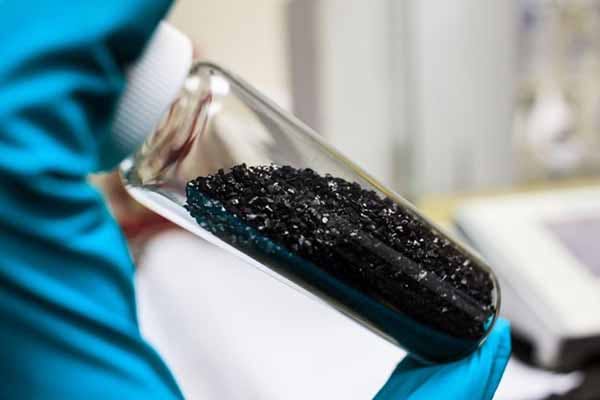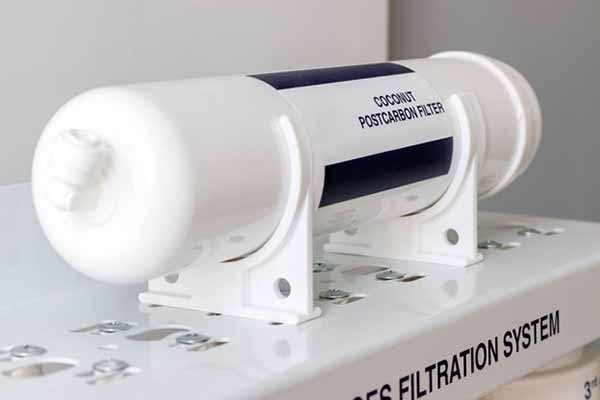🌟 New Arrival! Upgrade Your Water with Our Advanced Pitcher Filter. Shop Now
July 2022
Coconut Carbon: The Complete Guide
You’ve likely heard of activated carbon or activated charcoal, but have you heard of coconut carbon? Interestingly, activated coconut-shell carbon is the same as activated coconut charcoal, but they have different uses.
This form of carbon has many uses and benefits. Activated coconut carbon is utilized in many industries, including the food industry, water, air purification, and healthcare.
According to a report released by Transparency Market Research, coconut activated carbon has experienced a boost in sales. This is because of its efficient performance in helping manage air and water pollution and waste treatment globally, and because it’s an environmentally safe renewable resource.
Our article will discuss the various uses of coconut shell carbon and its benefits. We’ll also cover everything else you should know about coconut carbon to understand why it’s becoming a popular resource.
What Is Coconut-Shell Activated Carbon?
“Activated” carbon is a highly adsorbent powdered or granular carbon.
Although it has other uses, coconut-shell activated carbon has become one of the best forms of activated carbon for water filtration and water purification in recent years. Unlike different types of activated carbon, coconut-shell activated carbon has a large surface area and higher density of micropores.
Additionally, it can effectively absorb certain impurities. For example, granulated activated carbon (GAC) is commonly utilized in carbon filters to remove pollutants such as pesticides and herbicides from drinking water
What Does Coconut Shell Carbon Remove?
Did you know that coconut shell carbon has a significantly higher porosity than other forms of activated carbon? It has up to 50% more micropores than bituminous coal. Due to this, it can absorb contaminants and volatile organic compounds, which is why it's considered one of the most optimal materials for water filtration purposes.
Essentially, this means that coconut shell carbon is the preferred carbon to remove volatile organic compounds (otherwise known as VOCs) from drinking water point-of-entry systems (otherwise known as POE systems). Conveniently, it also removes foul odors and bad tastes from drinking water, which is why coconut shell carbon is commonly used in water filters.
What Is Coconut Carbon Used For?
Extraordinarily, coconut shell-based carbon has numerous real-world uses besides what we briefly touched on above. Below, we’ll list just a few ways coconut carbon is used.
- Wastewater purification
- Catalyst support (a material that’s generally solid with a high surface area and chemical stability that a catalyst is affixed to)
- Gold absorption from a gold solution (this is known as precious metal recovery)
- Organic impurity removal in various beverage and food applications
- Potable water purification
- Medical equipment uses (often used in blood-filtering devices like kidney dialysis machines)
What Is the Difference Between Carbon and Activated Carbon?
The primary difference between carbon and activated carbon is the surface area to volume ratio. Regular carbon has a significantly lower surface area to volume ratio when compared to activated carbon. This means that activated carbon has higher adsorption capabilities.
What Does Activated Carbon Do?
Plant-based activated carbon acts similarly to coconut shell-based activated carbon in that it’s used to filter contaminants from water and air.
However, it differs from coconut carbon in that the surface of the carbon is not as good for adsorption because it’s not as significant.
How Is Coconut Shell Activated Carbon Made?
Making coconut-shell activated carbon isn’t as difficult as you might think. Let's look at the three-step process of making coconut-shell activated carbon.
Step 1: Charring
The first step to making coconut-shell activated carbon is to ensure the used coconuts are cleaned and dried with the exterior fibers removed. After this has been done, the coconut shells need to go through the first stage, which is to char them.
To do this, they need to be subjected to very high temperatures, with the optimal temperature being between 500-600 degrees Celsius or 932-1,112 degrees Fahrenheit for many hours. Eventually (usually within 12 hours), the coconut shells will become charcoal.
One of the most popular production methods for activated carbon occurs in a drum kiln with a chimney. Since it has a chimney, a drum kiln can effectively create higher interior temperatures by limiting oxygen flow. Often the coconut shells at the bottom of the drum kiln will carbonize first.
Step 2: Pacification
The next step in the coconut carbon activation process is pacification. Pacification means that the airflow is wholly cut off from the bottom of the drum kiln, which allows the coals to begin cooling. This process is crucial to developing coconut-shell activated carbon because if left burning indefinitely, the formed coal will turn to ash.
Step 3: Steam Activation
Once the coal is ready, the next step is to activate it to become a filter. The primary purpose of activating the coconut shell carbon is to increase its pore size to catch more contaminants and particles when used for filtering.
There are primarily two ways to activate coconut shell carbon — by soaking it in chemicals like phosphoric acid, or it can be activated by steam, as mentioned previously.
For steaming, the temperature inside the rotary kiln must be brought to around 1,470-2,010 degrees Fahrenheit. This scorching steam will dehydrate the carbon, which allows the level of volatile organic compounds (VOCs) within it to be reduced.
While the coconut carbon is steamed, its pores will enlarge until they become large enough to catch molecules in water.
How Do They Reactivate Coconut Carbon?
Before we explore how to reactivate carbon, you should know more about what reactivated carbon is. Essentially, reactivated carbon is a more affordable alternative to virgin activated carbon.
Reactivated carbon comes from destroying spent activated carbon, usually through thermal treatment. Reactivating carbon does result in the coconut shell carbon losing some of its adsorption capabilities.
The activation process is simple. First, the spent activated carbon coconut shell is reactivated by heating it to incredibly high temperatures. Heating the spent activated carbon to these temperatures allows the absorbed organics to be released from the pore structure.
After the organics have been removed from the pore structure of the activated carbon, they can be used again.
How Long Does Coconut-Shell Activated Carbon Take to Work?
To understand how long it takes coconut-shell activated carbon to work, you need to understand a bit more about the filtration process.
There will need to be a carbon block for the filtration process to work. Therefore, a carbon block is classified as the workhorse of filtration technologies because it can perform a more significant range of filtration tasks when compared to other filtration technologies.
A carbon block features a sintered porous structure or filtration housing made for carbon, which acts as the filtration media with various additives, and thermoplastic binders. So how long will a coconut-shell activated carbon block filter take to work?
Once equipped, this filtration system will work immediately and last six to 12 months, which means the coconut activated carbon will begin filtering water as soon as the water starts flowing through it. So in one filter, you’ll have cleaner drinking water.
Is Coconut Shell Carbon Safe?
Coconut shell carbon is a renewable source that’s safe for the environment, water filtration, and food consumption. It’s also safe to use in specific medical devices. Essentially, coconut shell carbon is odorless, virtually tasteless, and non-toxic.
Is Charcoal Pure Carbon?
Pure carbon can be found in three different forms: graphite, diamond, and carbon black. Unlike graphite and diamonds, carbon black is an amorphous or non-crystalline form of carbon. Examples of this include charcoal and coal.
Charcoal is pure carbon, but coconut-shell activated carbon is usually composed of 70-80% carbon, making it nearly pure.
Is Coconut Charcoal the Same Thing as Activated Charcoal?
Coconut charcoal isn’t the same as activated charcoal because it hasn’t gone through activation. For coconut charcoal to become activated, it needs to be soaked with chemicals like phosphoric acid, or a steam method needs to be applied.
Is Coconut Activated Charcoal Better?
Many people often ask if coconut activated charcoal is better than regular activated charcoal and the answer is yes, it is better.
Not only is coconut activated charcoal environmentally safe and non-toxic, but it can be used for many different things and has a broader range of benefits. For example, one of the fields where coconut charcoal has the most impact is water purification and wastewater purification.
What Is Coconut Charcoal Used For?
Although coconut carbon and coconut charcoal are the same, they have different forms used for various things. Below are some of the things you can use coconut charcoal for, including some that might surprise you.
- Poison mitigation: Activated coconut charcoal has been used as a poison antidote for various types of drug overdoses. Coconut charcoal can reduce the amount of a drug a person's body absorbs.
- Natural detoxification support: Another widespread use of coconut charcoal is as a detoxifying agent. Coconut charcoal helps remove toxins and unwanted substances from a person's body by absorbing them. Since coconut charcoal has millions of pores, it can bind a significant sum of toxin particles and flush them out of a person's body.
- Teeth whitener: Like other activated carbon forms from charcoal and wood, coconut activated carbon can be used as a natural, bleach-free teeth whitener. It’s believed to reduce the appearance of yellow teeth with frequent use.
- Remedy for flatulence and bloating: Those who don't want to use chemical-based solutions for bloating and flatulence turn to coconut charcoal. Usually, a typical dose before meals will prevent bloating and excessive flatulence.
Is Coconut Charcoal Good For You?
Now that you know what activated coconut charcoal is used for, you can determine it’s safe. However, as with most things, coconut charcoal is only beneficial if used the way it is meant to be used.
Is Coconut Charcoal Good for BBQ?
Were you aware that coconut charcoal is a U.S. Pharmacopoeia food-grade material? Coconut charcoal adheres to strict quality requirements because it’s made to be used in medical machinery and to be ingested.
Many ask if coconut charcoal can be used for barbecuing, and the answer is yes. Since coconut carbon briquettes are a fast-burning food-grade material, they’re becoming an increasingly popular alternative for barbecues.
Additionally, many in the food industry favor coconut charcoal because it emits a pleasant fragrance. If you want to switch out charcoal for coconut charcoal, you can easily purchase coconut charcoal briquettes from a wide variety of stores in the U.S.
Coconut Carbon Has Many Uses
You’ve hopefully concluded that coconut carbon has many uses in various industries. Although it plays a vital role in the food and health industry with benefits in medical equipment and barbecuing, it's evident that its primary function is in water purification.
It’s one of the best filters for water purification because it has a greater surface area and higher density of micropores than other forms of carbon. In addition to this, coconut carbon is easy to make, renewable, safe to use, and can be reactivated.
If you're interested in learning more about the filtering capabilities of coconut carbon or would like to get a filter for your home to have cleaner drinking water, you can speak to us at HomeWater. We understand water filters and can help you choose one that is best for your needs and preferences.
Brought to you by homewater.com
All images licensed from Adobe Stock.
Featured Image

